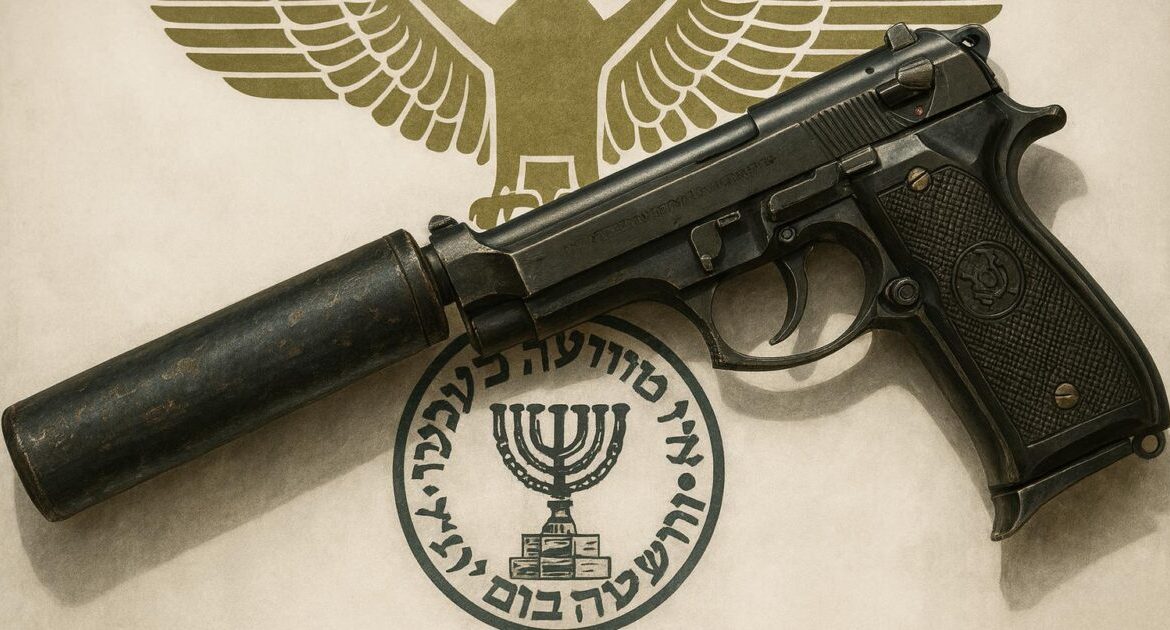
From Pagers to Nuclear Facilities: Mossad’s Multi-Domain Operations


“Where there is no wise direction, the people fall, but in the multitude of counselors there is safety.” Motto of Mossad.
Since the Hamas attack of October 7, 2023, which killed more than 1,200 Israelis, Israel has waged an unprecedented series of military and intelligence operations across the Middle East. Coordinated by the Israel Defense Forces (IDF) and Mossad, these campaigns have included assassinations, sabotage, bombing campaigns, and direct strikes on state and non-state actors alike, stretching from Israel to Gaza, Lebanon, Syria, Iran, Qatar, and Yemen.
Mossad, the Central Institute for Intelligence and Special Operations, is one of Israel’s three main intelligence agencies, alongside Aman (military intelligence) and Shin Bet (domestic security). With roughly 7,000 staff and a $3 billion annual budget, it is the second-largest espionage agency in the Western world after the CIA.
Mossad specializes in foreign intelligence collection, covert operations, and technological espionage. Its reach is extended globally through sayanim, Jewish volunteers abroad who provide logistical support, allowing vast operations on a relatively lean budget. The agency has a long record of bold missions, from hunting down the perpetrators of the 1972 Munich massacre to assassinations of Palestinian leaders in Europe, the Middle East, and North Africa.
One of the most audacious examples of Mossad’s capabilities came in September 2024, when thousands of pagers and walkie-talkies detonated simultaneously across Lebanon and Syria. Branded Operation Grim Beeper, the attack killed 42 people, injured more than 4,000, including Iran’s ambassador to Lebanon, and sidelined 1,500 Hezbollah fighters. Mossad had infiltrated Hezbollah’s supply chain years earlier, beginning in 2015 when it planted booby-trapped walkie-talkies that enabled both surveillance and remote detonation.
By 2024, Mossad was secretly manufacturing devices with PETN charges, sold to Hezbollah through front companies such as B.A.C. Consulting in Hungary. The operation involved fake marketing campaigns, manipulated pricing, and a nine-year buildup of trust before the simultaneous explosions.
It was a strategic win because Hezbollah could no longer rely on electronic communications, and no organization can function without trust in its own systems. The attack spread panic, while Hezbollah suffered its worst internal breach in decades.
The technological sabotage campaign was paired with leadership decapitation strikes. In July 2024, Hamas political leader Ismail Haniyeh was killed in Tehran.
Two months later, on September 27, Hezbollah Secretary-General Hassan Nasrallah was eliminated when Israel dropped 80 bunker-busting bombs on his Beirut stronghold, killing at least 33 others. Less than a week later, his successor Hashem Safieddine was also struck down in another Israeli airstrike. The rapid elimination of Hezbollah’s top two leaders left the group destabilized at a critical moment.
At the same time, Israel escalated destruction on a massive scale. Between October 2024 and January 2025, more than 10,000 structures across Lebanon were damaged or destroyed, with some municipalities losing 70 percent of their buildings.
Power plants, water systems, and telecommunications were systematically targeted, paralyzing daily life. From October 2023 to September 2024 there were 10,200 cross-border attacks, of which Israel launched 8,300. The violence displaced around 96,000 people in Israel and 500,000 in Lebanon.
In Syria, the collapse of Bashar al-Assad’s regime created a power vacuum that drew in multiple armed groups. Israel launched airstrikes aimed at preventing hostile, Iran-backed Islamist forces from establishing a foothold in the south and to support the Druze community, which was being slaughtered by Islamist militias. On July 16, 2025, Israeli strikes hit Damascus government buildings, including the defense ministry and the area near the presidential palace, killing at least three and wounding dozens. The strikes served as a warning to commanders directing troops toward Suwayda, where Druze militias were fighting for survival against regime troops and Islamist factions.
Further south, Yemen became another front in August 2025 when Israeli forces struck Houthi leadership in the capital, Sanaa. Israeli intelligence learned in real time that ten senior Houthi officials had gathered to listen to Abdul-Malik al-Houthi’s speech.
Minutes later, Israeli aircraft destroyed their safe houses, killing Houthi Prime Minister Ahmed al-Rahawi, nine ministers, and senior military leaders including defense minister Mohamed al-Atifi and chief of staff Muhammad Abd al-Karim al-Ghamari. The campaign was overseen by defense minister Israel Katz and IDF chief of staff Eyal Zamir, while Prime Minister Benjamin Netanyahu was briefed via a secure line.
The conflict reached its most dramatic escalation in June 2025 during the Twelve-Day War with Iran. On June 13, Israel launched Operation Rising Lion, its most ambitious strike to date, with more than 200 fighter jets dropping over 330 munitions on roughly 100 targets across the country.
The opening salvo crippled Iran’s largest uranium enrichment facility at Natanz, as well as sites in Isfahan and Tabriz. Nuclear scientists, ballistic missile production facilities, and air defense systems were struck simultaneously.
Thirty Iranian generals and nine nuclear scientists were killed in minutes, including IRGC commander Hossein Salami, armed forces chief of staff Mohammed Bagheri, and air force commander Amir Ali Hajizadeh. Mossad had smuggled precision weapons into Iran and established a covert drone base near Tehran to disable air defenses and secure Israeli air superiority.
At the same time, five car bombs detonated across Tehran, striking government and nuclear sites. Artificial intelligence systems were deployed to coordinate the multi-domain assault with unprecedented precision.
In the following days Israel struck additional facilities in Tabriz, Hamadan, the Parchin base, and the underground Fordow enrichment plant. According to Iran’s Health Ministry, around 1,062 people were killed during the conflict period, with Israel responsible for the initial strategic strikes.
Even the Gulf states, long spared direct Israeli attacks, were not immune. On September 9, 2025, Israel carried out its first-ever strike in Qatar, targeting Hamas leaders in Doha’s diplomatic West Bay Lagoon while they discussed a US ceasefire proposal. The attack marked the first direct strike on a Gulf Cooperation Council member.
From Gaza to Tehran, Beirut to Doha, Israel has shown an ability to fight across every domain, land, air, sea, cyber, and covert. Its campaigns combined the destruction of infrastructure, the elimination of leaders, and the innovation of supply chain sabotage with simultaneous multi-domain strikes, real-time intelligence operations, and years-long operational security.
The post From Pagers to Nuclear Facilities: Mossad’s Multi-Domain Operations appeared first on The Gateway Pundit.
